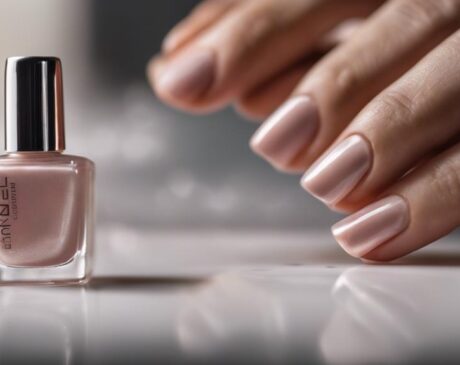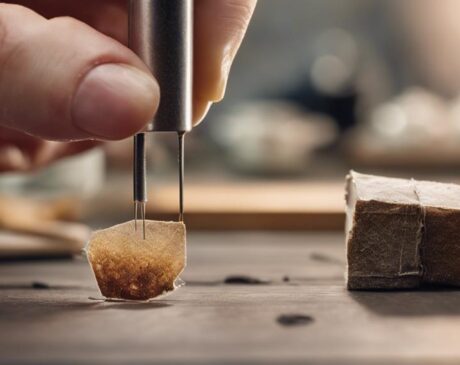Does Vaseline Break Down Nail Glue?
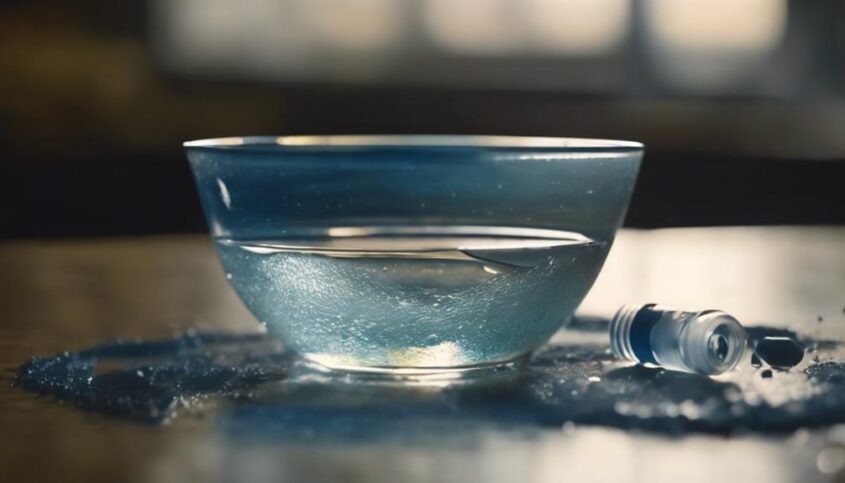
Applying Vaseline weakens nail glue and affects how long nails stay put. The barrier Vaseline creates can reduce glue adhesion. Your manicure might not last as long with Vaseline in the mix. For stronger nail bonding, steer clear of using Vaseline.
Key Takeaways
- Vaseline weakens nail glue adhesion by creating a barrier.
- It hinders the bond between nail glue and nails, affecting reliability.
- Applying Vaseline before glue may lead to premature nail detachment.
- Vaseline alters the adhesive properties, impacting how long nails stay on.
- Avoiding Vaseline ensures effective bonding for longer-lasting nails.
Understanding the Composition of Nail Glue
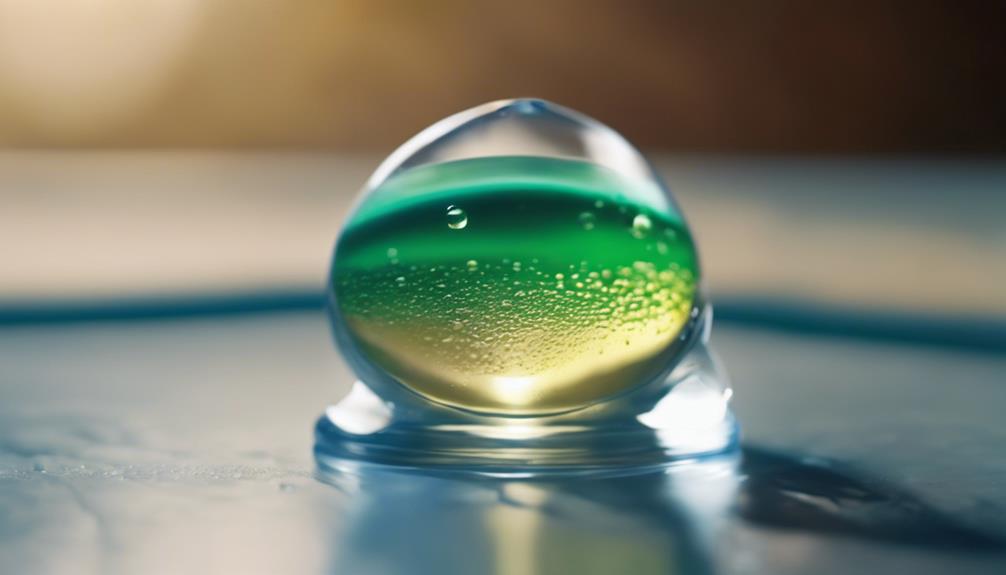
Analyzing the composition of nail glue can provide insight into how it interacts with substances like Vaseline. Nail glue typically consists of ethyl cyanoacrylate, which is a strong adhesive that bonds well with various materials. When nail glue comes into contact with surfaces, it polymerizes quickly, forming a tight bond. This fast-drying property makes it ideal for quickly repairing broken nails or attaching artificial ones.
Understanding the chemical makeup of nail glue is crucial in comprehending how it reacts with other substances. Vaseline, a petroleum jelly product, contains hydrocarbons that may have an effect on the adhesive properties of nail glue. The interaction between nail glue and Vaseline could potentially alter the glue's ability to bond effectively with the nail surface.
Effects of Vaseline on Adhesive Properties
When you apply Vaseline near nail glue, it can potentially impact the adhesive properties.
Vaseline might weaken the bond between the nail and the glue, affecting how long the nail stays in place.
Understanding how Vaseline interacts with nail glue is crucial for maintaining strong and lasting adhesion.
Vaseline and Nail Glue
Applying Vaseline before using nail glue can potentially weaken the adhesive properties of the glue. Vaseline creates a barrier that hinders the nail glue from properly adhering to your nails. When Vaseline is present, the glue may not bond as effectively, leading to a higher chance of your nails popping off sooner than desired.
To ensure a strong and lasting bond, it's recommended to avoid applying Vaseline or any oily substances on your nails before using nail glue. By skipping the Vaseline step, you allow the nail glue to work its magic and keep your nails looking fabulous for longer.
Impact on Adhesion
To maintain strong adhesion when using nail glue, it is crucial to avoid applying Vaseline as it can weaken the bond between the glue and your nails. Vaseline creates a barrier that interferes with the adhesive properties of nail glue, leading to lifting or premature detachment of the artificial nails. Here is a comparison between the effects of Vaseline on nail glue adhesion:
| Effects on Adhesion | Nail Glue without Vaseline | Nail Glue with Vaseline |
|---|---|---|
| Strength | Strong | Weakened |
| Duration | Long-lasting | Shortened |
| Appearance | Neat and even | Risk of lifting |
| Application | Easy and effective | Less reliable |
How Vaseline Interacts With Nail Glue
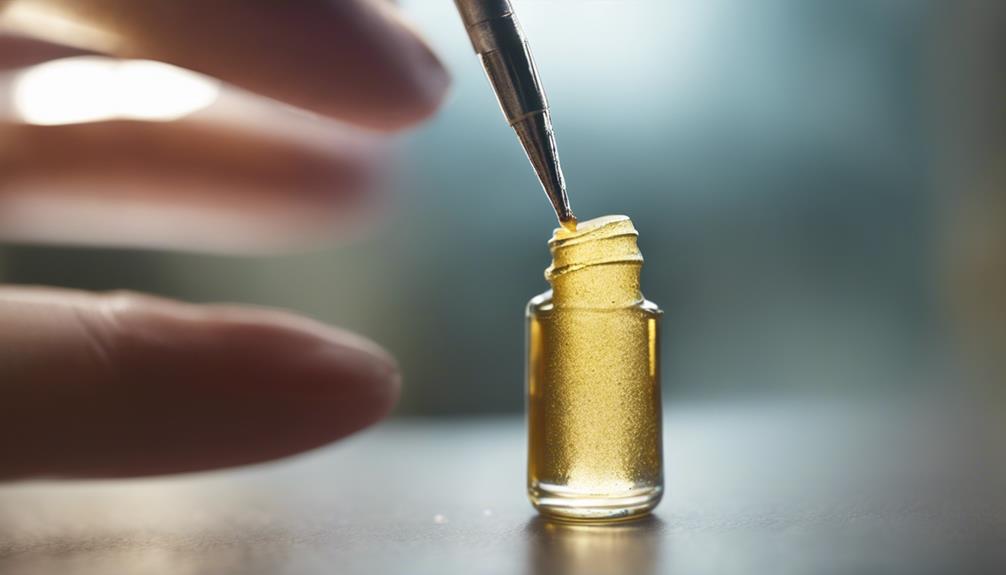
When you apply Vaseline before using nail glue, it acts as a barrier between the glue and your nail, potentially affecting the adhesive properties. This interaction might impact the glue's ability to adhere firmly to your nails.
Additionally, when it comes to removing the nail glue, the presence of Vaseline can influence the effectiveness of the removal process.
Vaseline as Barrier
Using Vaseline as a barrier can potentially prevent nail glue from adhering to your skin. By applying a thin layer of Vaseline around your nails before using nail glue, you create a barrier that can make cleanup easier and reduce the chances of the glue sticking to your skin.
This simple trick gives you the freedom to experiment with different nail designs without worrying about the mess or the hassle of removing excess glue from your skin. Remember, a little Vaseline can go a long way in keeping your skin glue-free and your nail art pristine.
Enjoy the process of creating beautiful nails without the fear of glue mishaps, thanks to this easy barrier method.
Impact on Adhesion
Applying Vaseline as a barrier around your nails can alter the adhesion of nail glue, potentially affecting how well it sticks to your nails. The presence of Vaseline creates a barrier that can hinder the nail glue from properly bonding with your nail bed. This interference may result in the nail glue not adhering as strongly as desired, leading to potential issues like lifting or premature detachment of your artificial nails.
It's important to consider this impact on adhesion when using Vaseline as a barrier before applying nail glue. To ensure optimal adhesion, it's advisable to avoid getting Vaseline on areas where the nail glue needs to bond securely for long-lasting results.
Removal Process Effectiveness
For optimal removal process effectiveness, understanding how Vaseline interacts with nail glue is crucial. When you apply Vaseline around your nails before removing nail glue, it can act as a barrier, making it easier to peel off the glue without damaging your nails.
Vaseline helps to moisturize the skin around your nails, preventing it from drying out due to the harsh chemicals in the glue. By creating a protective layer, Vaseline also reduces the direct contact between the nail glue and your skin, minimizing the risk of irritation or allergic reactions.
This simple trick can make the removal process smoother and less abrasive, allowing you to enjoy the freedom of changing your nail look without any hassle.
Testing Vaselines Impact on Nail Glue
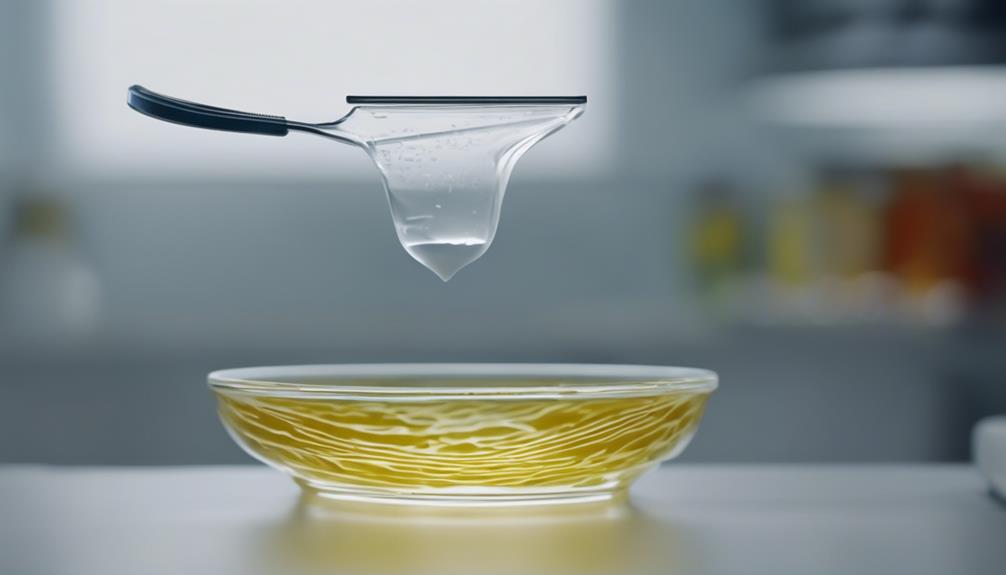
Testing the effect of Vaseline on nail glue reveals important insights for nail care enthusiasts. When experimenting with Vaseline's impact on nail glue, consider the following:
- Your nails are a canvas for creativity, don't let anything limit your artistic expression.
- Embrace the freedom to explore new nail care techniques without fear of damaging your nails.
- Discover the power of Vaseline in potentially extending the lifespan of your nail designs.
- Take control of your nail care routine by understanding how different products interact with each other.
Factors Influencing Nail Glue Breakdown
Understanding the various factors that contribute to nail glue breakdown is essential for maintaining long-lasting nail designs. Factors influencing nail glue breakdown can include exposure to water, oils, chemicals, and rough usage.
Water exposure weakens the adhesive properties of nail glue, making it more prone to lifting or breaking. Oils, such as those found in lotions or cuticle oils, can also break down the glue bond, leading to premature detachment of nail enhancements. Chemicals present in cleaning products or acetone-based nail polish removers may react with the glue, causing it to deteriorate faster.
Additionally, rough usage like excessive typing, picking at nails, or using nails as tools can put stress on the glue bond, causing it to weaken over time. Being mindful of these factors and taking steps to minimize their impact can help preserve the integrity of your nail glue and maintain your manicure for longer periods.
Tips for Preserving Nail Glue Integrity
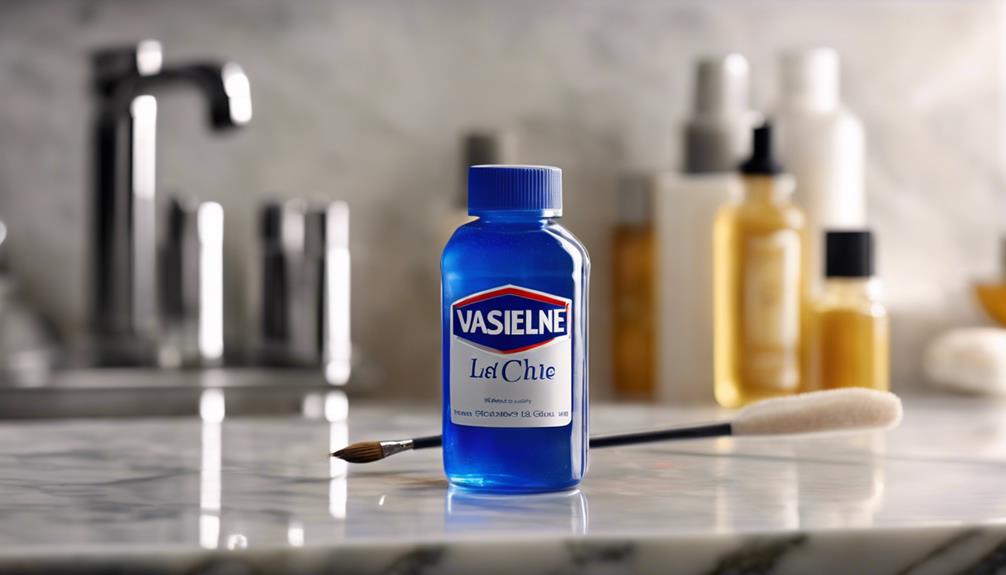
Wondering how you can protect the integrity of your nail glue for long-lasting manicures? Here are some tips to help you maintain the quality of your nail glue and keep your manicure looking fresh and fabulous:
- Store Properly: Keep your nail glue in a cool, dry place away from direct sunlight to prevent it from drying out or becoming clumpy.
- Tightly Seal: Always make sure to tightly seal the cap of your nail glue after each use to prevent air from getting in and causing the glue to thicken.
- Avoid Contamination: Keep the nozzle of your nail glue clean by wiping off any excess glue before sealing it to prevent blockages or clogs.
- Use Sparingly: Remember, a little goes a long way with nail glue. Avoid using too much glue, as it can lead to a messy application and potential damage to your natural nails.
Common Misconceptions About Vaseline
You might believe Vaseline weakens nail glue, but let's debunk that myth.
Contrary to common belief, Vaseline doesn't break down nail glue adhesion.
Understanding the true relationship between Vaseline and nail glue can help you make informed decisions about your nail care routine.
Vaseline and Nail Glue
Applying Vaseline to your nails before using nail glue doesn't break down the adhesive. Despite common misconceptions, Vaseline actually acts as a barrier, protecting your skin from the glue without interfering with its bonding properties.
When you liberally apply Vaseline before a manicure, you're embracing freedom in your nail care routine. Remember, you have the power to control your choices and methods. By understanding the facts, you can confidently experiment with different techniques without fear. Embrace the liberation that comes with knowing the truth about Vaseline and nail glue. Feel empowered to express yourself through your nail art without restrictions. Let your creativity flow freely!
- Empower yourself with knowledge
- Embrace experimentation without hesitation
- Express your creativity boldly
- Enjoy the freedom of choice
Effects on Adhesion
Despite common misconceptions, Vaseline doesn't negatively affect the adhesion of nail glue when applied as a barrier before a manicure. In fact, using Vaseline can actually help protect your skin and cuticles from the harsh chemicals in nail glue while ensuring easy clean-up after your manicure.
By creating a protective barrier around your nails, Vaseline prevents the glue from sticking to your skin without compromising the bond between the nail and the glue. This means you can enjoy a long-lasting manicure without worrying about the glue not adhering properly.
Comparing Vaseline to Other Substances
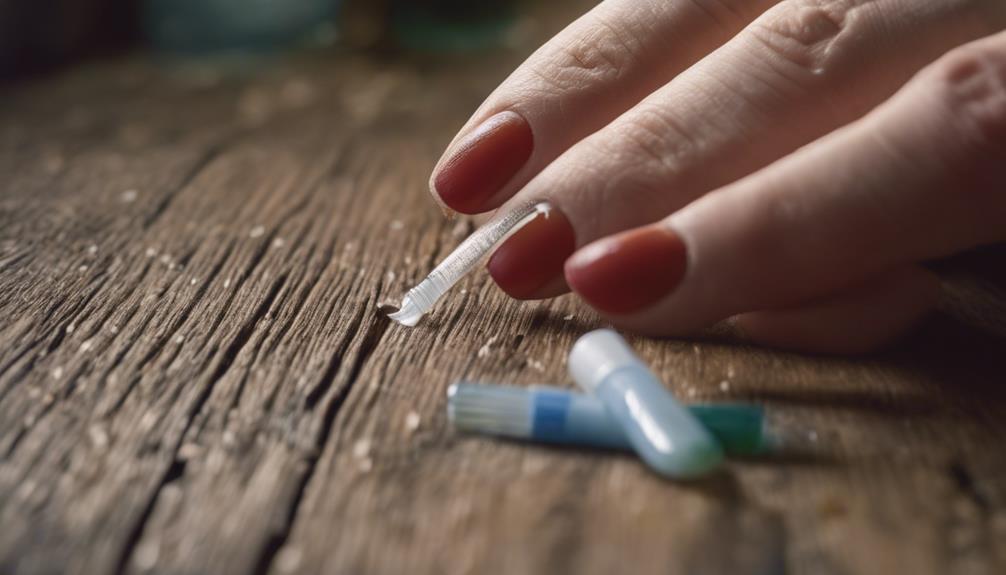
Comparing Vaseline to other substances reveals differences in their effectiveness for breaking down nail glue. When choosing a product to remove nail glue, it's essential to consider the options available to find what suits you best.
Here are some comparisons to help you make an informed decision:
- Vaseline: Provides a gentle option for breaking down nail glue without harsh chemicals.
- Acetone: Known for its strong adhesive removal properties but can be harsh on the skin and nails.
- Rubbing Alcohol: Offers a less aggressive alternative to acetone but may take longer to dissolve the glue.
- Lemon Juice: A natural remedy that can help weaken the glue, but may not be as effective on stubborn adhesives.
Maintaining Long-Lasting Nail Adhesion
To ensure long-lasting nail adhesion, proper nail preparation is crucial for a strong bond between your nails and the adhesive. Before applying nail glue, follow these steps to maintain a durable and resilient nail adhesion:
| Step | Description | Benefits |
|---|---|---|
| Clean Your Nails | Remove any oils or residues using nail polish remover or alcohol. | Ensures a clean surface for better adhesion. |
| Buff the Nail Bed | Gently buff the surface of your nails to remove shine and roughen. | Helps the glue adhere better to the nail surface. |
| Avoid Water Contact | Refrain from wetting your nails for a few hours post nail application. | Prevents weakening of the glue bond due to moisture. |
Recommendations for Nail Glue Application
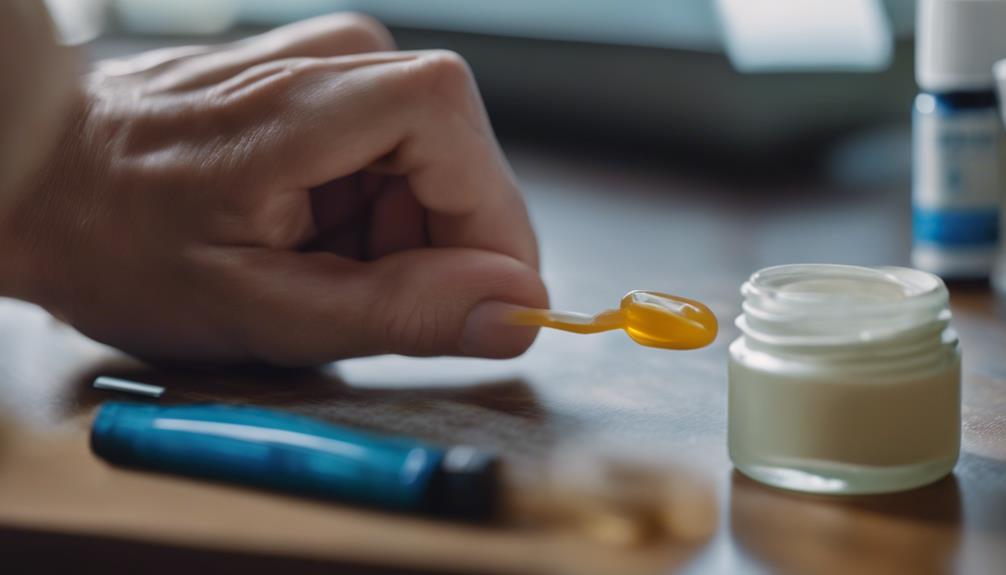
For optimal results when applying nail glue, ensure your nails are clean and free of any oils or residues. To achieve the best outcome and maintain your freedom to express yourself through your nails, follow these recommendations:
- Begin with a Clean Canvas: Start by gently removing any old nail polish or residues from your nails using a non-acetone nail polish remover. This step ensures a fresh start for your nail application.
- Buff and Shape: Use a nail file to shape your nails according to your preference and gently buff the surface to remove any shine. This helps the glue adhere better to the nail surface.
- Apply Sparingly: Remember, less is more when it comes to nail glue. Apply a small amount of glue to avoid excess spillage and ensure a neat application.
- Press Firmly: After placing the artificial nail onto your natural nail, press down firmly for a few seconds to ensure a secure bond. This step guarantees that your nails stay put, giving you the freedom to move without worry.
Frequently Asked Questions
Can Using Vaseline on My Nails Cause Any Adverse Effects Other Than Breaking Down Nail Glue?
Using Vaseline on your nails may cause issues beyond nail glue breakdown. It can create a barrier that blocks moisture absorption and lead to weakened nails. Consider alternative nail care options to maintain healthy nails.
Are There Any Alternative Products That Can Be Used to Moisturize the Skin Around the Nails Without Affecting Nail Glue?
When looking for products to moisturize the skin around your nails without disturbing nail glue, consider using cuticle oils or creams. These alternatives offer hydration without compromising the adhesion of your nail glue.
How Long Does It Typically Take for Vaseline to Start Breaking Down Nail Glue?
Typically, it takes a significant amount of time for Vaseline to begin breaking down nail glue. However, it's best to avoid contact between Vaseline and nail glue to maintain the adhesive's longevity on your nails.
Will Using a Top Coat Over Nail Glue Help Prevent It From Breaking Down When Using Vaseline?
To prevent nail glue breakdown with Vaseline, applying a top coat can help create a protective barrier. It's a simple solution that can extend the longevity of your nail glue when using Vaseline.
Are There Any Specific Types of Nail Glue That Are More Resistant to the Effects of Vaseline?
When it comes to nail glue, some types are more resistant to vaseline effects. Look for stronger formulations or those labeled as waterproof. Experimenting with different brands can help find one that withstands exposure to vaseline better.

